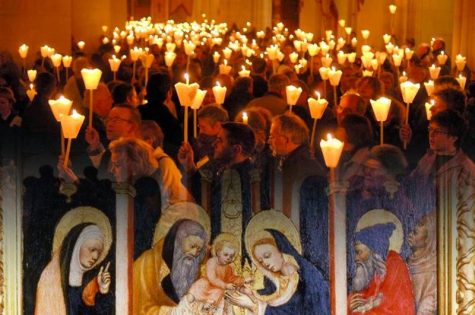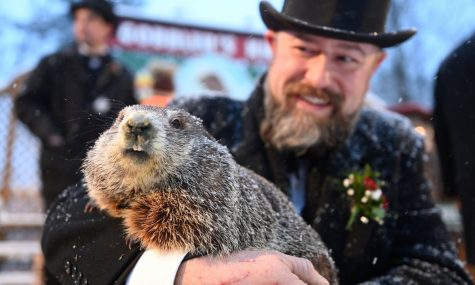Trading Candles for Groundhogs
The Historical and Religious Roots of Groundhog Day
Although the beginning of spring for many of us is now marked by plastic pastel-colored easter eggs and Cadbury chocolate hitting the shelves of grocery stores the day after Valentines Day, many still turn to the Groundhog to determine when the new season has arrived.
Kelly Finch ‘22 reminisced about her middle school saying, “I remember we would always watch the little Groundhog come out of its burrow on the news. I think it’s a cute way to start off the season, well depending on his shadow!”
February 2nd marked the first day of spring in many cultural celebrations, dating all the way back to the Celts’ ancient tradition of “Imbolc” for example. Imbolc is a pagan holiday that surrounds the start of spring, eventually evolving into the Christian feast “Candlemas.”

Also known as “Presentation of the Lord,” the feast of Candlemas takes us back to when the Virgin Mary journeyed to the Temple in Jerusalem 40 days after Jesus’ birth to be purified and to present her firstborn to God, as Jewish Law instructed. Around 450 AD, the tradition of lighted candles was implemented into the celebration and established the name of the holiday.
Some Christians, depending on the region of Europe, also believed that a sunny forecast for Candlemas indicated 40 more days of winter cold and snow. This is why candles were blessed and distributed by the clergy, representing the winter’s duration and extremity.
Taking their own spin on the concept of predicting spring, Germans decided that winter would be over if badgers and their other furry friends caught a glimpse of their shadows on the 2nd of February. By the 1700-1800s, German immigrants had settled in Pennsylvania, bringing their tradition with them and initially choosing the hedgehog as the animal who would predict the season’s fate; however, they ended up changing their animal meteorologist mascot to groundhogs instead of hedgehogs as they were more abundant where they had settled.
Officially celebrated for the first time in 1887, Groundhog Day was the creation of a local newspaper editor by the name of Clymer Freas. He successfully pitched the concept to a group called the Punxsutawney Groundhog Club, consisting of businessmen and groundhog hunters. As the men approached what is known as Gobbler’s Knob, the groundhog emerged from the ground and unfortunately announced winter for another 6 weeks at the sight of his shadow.
The Punxsutawney Groundhog Club then appointed Phil, the Punxsutawney groundhog, as “America’s only true weather-forecasting groundhog.” Every groundhog used in Punxsutawney’s festivities and ceremony comes from Phil’s line of groundhogs.

Today, thousands of people travel to Punxsutawney to participate and witness the Groundhog Day events in a borough with a population of 6,000 people. The official Groundhog Day ceremony is conducted by a group of authorized and respected locals called “the Inner Circle.”
With top hats sitting upon their heads and dressed in tuxedos, the Inner Circle dignitaries supposedly speak in a Pennsylvania Dutch dialect that the groundhog can understand called “Groundhogese.”
If Phil emerges from hibernation above ground and sees his shadow, winter prolongs another 6 weeks and he returns to his burrow, but if his shadow is nowhere to be found, spring is arriving early.
“I like how Groundhog Day serves as a symbol of new beginnings and new life. Whether or not the groundhog is accurate, I like what the day represents,” said Aryana Matsumoto ‘23.
According to studies done by the National Climatic Data Center, Phil’s predictions have only been accurate 50% of the time, but nonetheless Groundhog Day remains a day full of tradition and festivities that is definitely worth celebrating.
To learn more about the Punxsutawney Groundhog Club’s celebration that took place on February 2nd, go to https://www.groundhog.org/ for more information!
